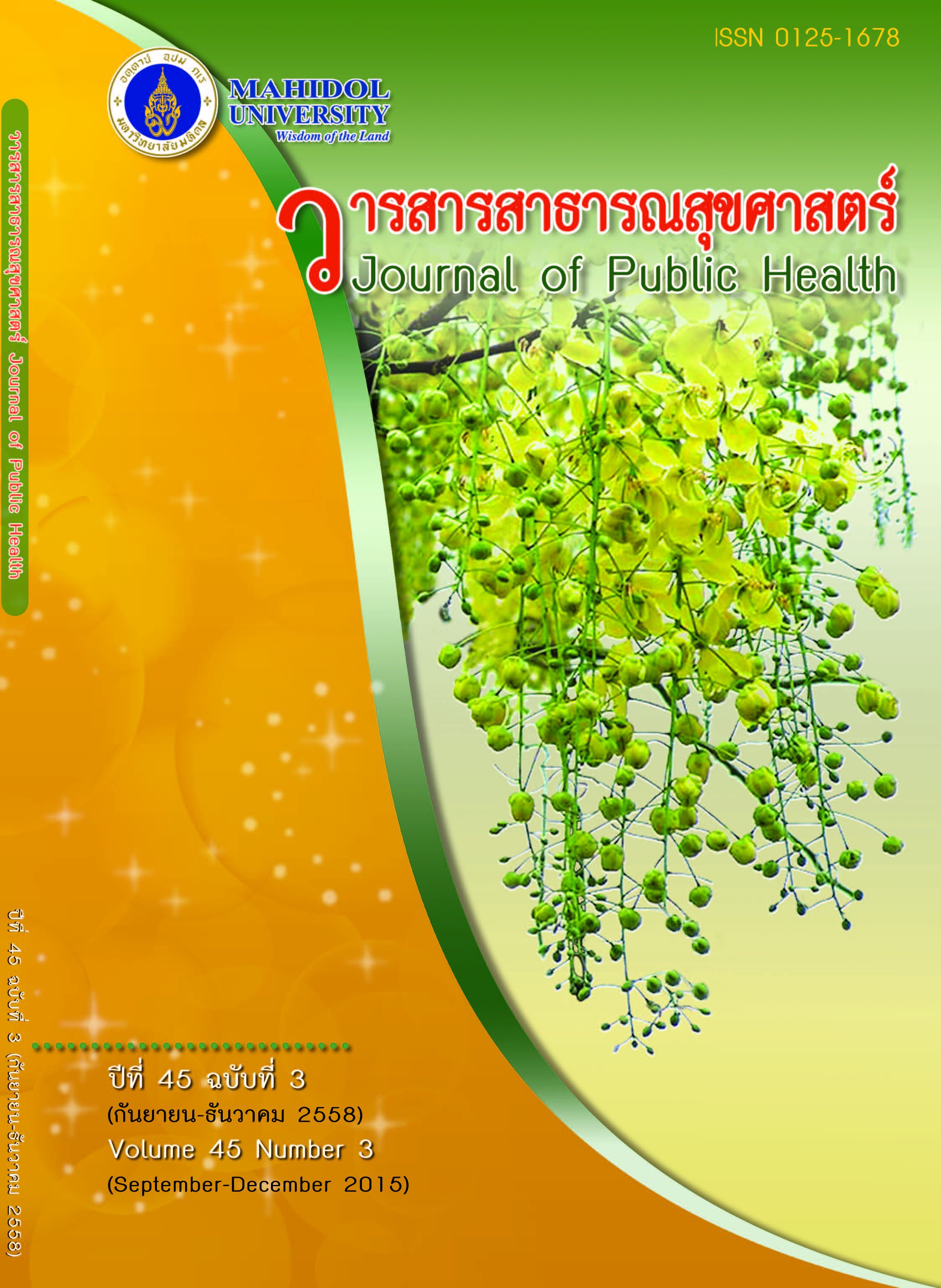การวิเคราะห์ปัจจัยที่มีความสัมพันธ์ต่อสภาวการณ์สุขาภิบาลอาหารในเขตเทศบาลนครพิษณุโลก จังหวัดพิษณุโลก
Keywords:
สภาวการณ์สุขาภิบาลอาหาร, ความรู้ ทัศนคติ และการปฏิบัติด้านสุขาภิบาลอาหาร, สถานประกอบการอาหาร, ปัจจัยทางกายภาพ เคมี และชีวภาพ, ความปลอดภัยทางชีวภาพ, food sanitation situation, knowledge attitudes and practices of food sanitation, food service establishmentAbstract
บทคัดย่อ
วิจัยสำรวจเชิงวิเคราะห์เพื่อศึกษาสภาวการณ์สุขาภิบาลอาหารในเขตเทศบาลนครพิษณุโลก จากร้านอาหาร 100 ร้าน ร้านอาหารในโรงอาหารของโรงเรียนและศูนย์พัฒนาเด็กเล็ก 53 ร้าน แผงลอยจำหน่ายอาหาร 60 แผง และตลาดสดประเภทที่ 1 จำนวน 6 แห่ง ศึกษาปัจจัยด้านความรู้ ทัศนคติ และการปฏิบัติตนด้านสุขาภิบาลอาหารของผู้สัมผัสอาหาร ปัจจัยด้านกายภาพของสถานประกอบการ ปัจจัยการปนเปื้อนทางชีวภาพ และปัจจัยการปนเปื้อนทางเคมี วิเคราะห์หาความสัมพันธ์ของปัจจัยที่มีผลต่อสภาวการณ์สุขาภิบาลอาหารด้วยโมเดลสมการโครงสร้างและถดถอยโลจิสติก พบว่า ผู้สัมผัสอาหารมากกว่าร้อยละ 90 มีความรู้อยู่ในระดับดี ส่วนใหญ่มีทัศนคติอยู่ในระดับดีและระดับปานกลาง ร้อยละ 53 ของผู้สัมผัสอาหารในตลาดสดมีคะแนนการปฏิบัติตนอยู่ในระดับดี ระดับความรู้มีความสัมพันธ์อย่างมีนัยสำคัญทางสถิติกับการปฏิบัติตน (p <0.001) สถานประกอบการผ่านเกณฑ์ด้านกายภาพมากกว่าร้อยละ 70 พบการปนเปื้อนทางชีวภาพร้อยละ 47 มีการปนเปื้อนสารเคมีน้อยมาก ประเมินสภาวการณ์สุขาภิบาลอาหารได้เท่ากับคิดเป็นโอกาสความปลอดภัยด้านชีวภาพร้อยละ เสนอแนะว่า ควรมีมาตรการที่เหมาะสมเพื่อปรับเปลี่ยนความรู้และทัศนคติสู่การปฏิบัติอย่างถูกสุขอนามัย มีการเฝ้าระวังการปนเปื้อนอย่างต่อเนื่อง และควรศึกษาปัจจัยอื่นที่มีผลต่อสภาวการณ์สุขาภิบาลอาหารในภาพรวมของพื้นที่
The Analysis of Factors Influencing Food Sanitation in Phitsanulok Municipality, Phitsanulok Province
ABSTRACT
The analytical survey research aimed to study food sanitation in Phitsanulok Municipality from 100 restaurants, 53 food shops in school cafeterias and child care centers, 60 street food stalls, and 6 fresh markets. The knowledge, attitudes, and practices of food handlers regarding food sanitation. In addition, physical factors of food establishments, biological and contaminations were determined. The relationship of these factors with food sanitation situation was analyzed by Structural Equation Modeling (SEM) and Logistics Regression Knowledge level of food handlers in most settings was good (≥90%); attitude was at good and medium levels. In addition, practice levels of food handlers from fresh markets were higher than others. Knowledge level had a statistical relationship (p <0.001) at the practice level. All types of studied food settings passed the physical criteria over 70%. Biological contamination was found at 47%. Chemical contamination was minute. The result of food sanitation evaluation received a safety score of 1.53 rating the biological safety opportunity at 65%. Applying appropriate measures for transforming the knowledge and attitude to hygienic practices is recommended. The surveillance of contamination should be conducted regularly. Other factors related to food sanitation should be investigated further to determine the whole food sanitation situation in this area.
Downloads
Issue
Section
License
Creative Commons License CC-BY-ND


